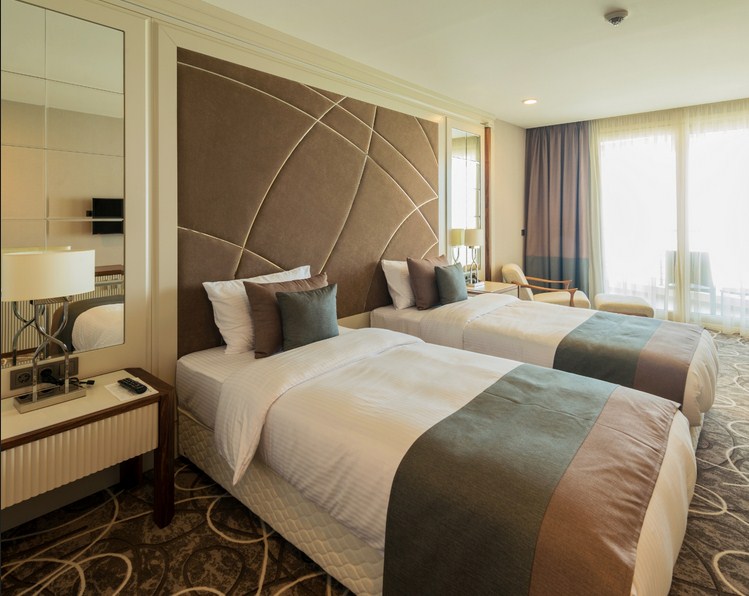The Psychology of Hotel Room Design: Creating a Relaxing Environment

This blog explores the psychology of hotel room design, focusing on strategies for creating a relaxing environment that promotes rest, rejuvenation, and comfort for guests, highlighting the significant impact of layout, color scheme, furniture, and amenities.
Elements of Relaxing Hotel Room Design
1. Comfortable Bedding and Furniture
The quality of the bedding and furniture in a hotel room can significantly impact guests’ comfort and sleep quality. Invest in high-quality mattresses, pillows, and linens to provide guests with a restful night’s sleep. Choose furniture pieces that are ergonomic, functional, and comfortable, allowing guests to relax and unwind with ease.
2. Soothing Color Palette
The color scheme of a hotel room can evoke different emotions and moods in guests. Opt for soothing, neutral colors such as soft blues, greens, and earth tones to create a calming atmosphere. Avoid bold or jarring colors that may be too stimulating or distracting for guests trying to relax.
3. Soft Lighting and Ambiance
Lighting plays a crucial role in setting the mood and ambiance of a hotel room. Incorporate a combination of natural and artificial lighting sources to create a warm, inviting environment. Use dimmer switches or adjustable lighting fixtures to allow guests to customize the brightness levels according to their preferences.
4. Clutter-Free Space
A clutter-free environment can promote a sense of calm and relaxation for guests. Keep the room layout simple and organized, with ample storage solutions to help guests keep their belongings tidy and out of sight. Minimize unnecessary decorative items and furniture to create a sense of spaciousness and serenity.
5. Thoughtful Amenities
Thoughtfully curated amenities can enhance the guest experience and make them feel pampered and cared for. Provide essential amenities such as toiletries, bathrobes, slippers, and a well-stocked minibar. Consider offering additional amenities such as aromatherapy diffusers, sound machines, or meditation cushions to help guests unwind and de-stress.
6. Nature-Inspired Elements
Incorporating elements of nature into the hotel room design can evoke feelings of tranquility and connection to the outdoors. Use natural materials such as wood, stone, and bamboo in furniture and decor accents. Bring in some greenery, such as potted plants or floral arrangements, to add freshness and vitality to the space.
7. Personalized Touches
Personalized touches can make guests feel valued and appreciated during their stay. Consider incorporating personalized welcome notes, guest amenities tailored to their preferences, or custom artwork that reflects the local culture and heritage. These small gestures can leave a lasting impression on guests and enhance their overall satisfaction with their stay.
Conclusion
Hotel room design is a complex aspect of the hospitality industry, involving understanding guest needs and preferences, incorporating relaxation and well-being elements, and incorporating comfortable bedding, soothing color palettes, thoughtful amenities, and personalized touches to create a memorable and enjoyable experience.
#HotelRoomDesign #HospitalityDesign #GuestExperience #Relaxation #InteriorDesign #HotelAmenities #Comfort #TravelAccommodation #PsychologyOfDesign #HospitalityTips

